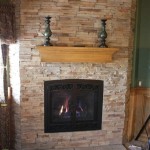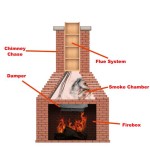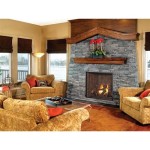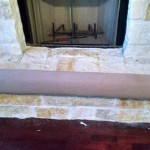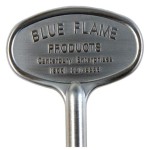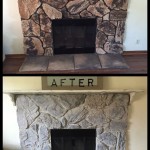The Enduring Appeal of Stone Fireplace Mantles
Stone fireplace mantles represent a confluence of functionality and aesthetics, serving as a focal point within a living space while providing a practical surface for display and decoration. The inherent characteristics of stone – its durability, natural variation, and timeless appeal – contribute to the enduring popularity of these architectural elements. Selecting a stone fireplace mantle involves careful consideration of material, style, and installation, as each element plays a crucial role in achieving the desired aesthetic and ensuring the longevity of the structure.
The history of fireplace mantles dates back centuries, evolving from simple stone ledges designed to catch smoke and debris to elaborate architectural statements reflecting the prevailing design trends of the time. Early mantles were primarily functional, constructed from readily available materials and serving a purely utilitarian purpose. As architectural styles evolved, the fireplace mantle transformed into a canvas for ornamentation, incorporating intricate carvings, moldings, and decorative elements. Stone, with its inherent strength and workability, became a favored material for crafting these increasingly elaborate mantles.
Today, stone fireplace mantles continue to be a popular choice for homeowners seeking to add a touch of elegance and sophistication to their living spaces. The wide variety of stone types available, coupled with the ability to customize designs to suit specific architectural styles, ensures that there is a stone fireplace mantle to complement any interior décor. From rustic and natural designs to sleek and contemporary styles, stone offers a versatility that few other materials can match.
Understanding the Different Types of Stone
The selection of stone for a fireplace mantle significantly impacts its overall appearance, durability, and cost. Different types of stone possess unique characteristics that influence their suitability for this particular application. Understanding the nuances of each stone type is crucial for making an informed decision that aligns with both aesthetic preferences and budgetary constraints.
Granite, an igneous rock known for its exceptional hardness and resistance to heat, is a popular choice for fireplace mantles. Its durability ensures that it can withstand the daily wear and tear of a living space, while its heat resistance makes it suitable for proximity to the fireplace opening. Granite is available in a wide range of colors and patterns, from subtle speckled variations to bold and dramatic veining. Its polished surface provides a sleek and sophisticated appearance that complements modern and contemporary designs. However, granite can be relatively expensive compared to other stone options.
Marble, a metamorphic rock prized for its elegant appearance and intricate veining, is another popular choice for fireplace mantles. Its smooth, polished surface reflects light beautifully, creating a sense of luxury and sophistication. Marble is available in a range of colors, from classic white and gray to vibrant greens and pinks. While marble is relatively durable, it is more porous than granite and susceptible to staining from spills and acidic substances. Regular sealing and maintenance are therefore necessary to protect its surface. Marble is often associated with traditional and formal architectural styles.
Limestone, a sedimentary rock composed primarily of calcium carbonate, offers a more rustic and natural aesthetic. Its softer texture allows for intricate carving and molding, making it a popular choice for custom designs. Limestone is available in a range of neutral colors, from creamy white to beige and gray. Its porous nature makes it susceptible to staining, but this can be mitigated with proper sealing. Limestone is often used in traditional and farmhouse-style interiors.
Slate, a fine-grained metamorphic rock, is known for its durability and distinctive layered appearance. Its dark, muted colors create a dramatic and sophisticated look. Slate is highly resistant to heat and staining, making it a practical choice for fireplace mantles. Its natural cleft surface provides a textured and tactile feel. Slate is often used in contemporary and minimalist designs.
Manufactured stone, also known as cultured stone, is a composite material that mimics the appearance of natural stone. It is typically made from a blend of cement, aggregates, and pigments. Manufactured stone offers a cost-effective alternative to natural stone, while still providing a realistic and aesthetically pleasing look. It is available in a wide range of colors, textures, and styles, allowing for customization to match various architectural designs. While manufactured stone is durable, it is not as heat-resistant as natural stone and may not be suitable for direct exposure to the fireplace opening.
Choosing the Right Style and Design
The style and design of a stone fireplace mantle should complement the overall aesthetic of the living space. Considerations include the architectural style of the home, the size and shape of the fireplace opening, and the desired level of ornamentation. A well-chosen design will enhance the existing décor and create a cohesive and visually appealing focal point.
Traditional fireplace mantles often feature elaborate carvings, moldings, and decorative details. They are typically constructed from marble or limestone and incorporate classical architectural elements such as columns, pilasters, and cornices. Traditional mantles are often paired with ornate fireplace surrounds and decorative hearths. This style is best suited for homes with formal or classical architectural designs.
Contemporary fireplace mantles are characterized by clean lines, minimalist designs, and a focus on functionality. They are often constructed from granite or slate and feature simple, geometric shapes. Contemporary mantles may incorporate built-in shelves or storage compartments. This style is best suited for homes with modern or minimalist architectural designs.
Rustic fireplace mantles emphasize natural materials and textures. They are often constructed from rough-hewn stone or reclaimed wood and feature a more organic and asymmetrical appearance. Rustic mantles may incorporate natural elements such as river rock or petrified wood. This style is best suited for homes with farmhouse or country-style architectural designs.
Floating fireplace mantles create a sense of weightlessness and can be used to showcase the stone itself. They are typically mounted directly to the wall without any visible support. Floating mantles are often constructed from thick slabs of stone and feature a clean, minimalist design. This style is best suited for contemporary homes with a focus on simplicity and functionality.
Shelf mantles are a more traditional option that provides a surface for displaying decorative items. These mantles are typically constructed from stone and feature a horizontal shelf above the fireplace opening. Shelf mantles can be customized with various moldings and decorative details to suit different architectural styles. This style is suitable for a wide range of home styles.
Installation and Maintenance Considerations
Proper installation is crucial for ensuring the structural integrity and longevity of a stone fireplace mantle. The weight of the stone requires secure anchoring to the wall, typically involving specialized brackets and fasteners. It is recommended to hire a qualified professional with experience in stone installation to ensure that the mantle is properly installed and meets all relevant building codes.
The first step in the installation process is to prepare the wall surface. The wall must be structurally sound and capable of supporting the weight of the stone mantle. Any existing wall coverings, such as wallpaper or paint, should be removed to ensure proper adhesion of the mounting hardware. A level line should be marked on the wall to indicate the desired height of the mantle.
Next, the mounting brackets are installed on the wall. The type of brackets used will depend on the weight and size of the stone mantle, as well as the construction of the wall. The brackets should be securely fastened to the wall studs or concrete using appropriate screws or anchors. It is important to ensure that the brackets are level and aligned correctly to support the mantle properly.
Once the mounting brackets are in place, the stone mantle can be carefully lifted and positioned onto the brackets. It is important to use proper lifting techniques and equipment to avoid injury or damage to the stone. The mantle should be securely fastened to the brackets using epoxy or other suitable adhesive. Any gaps between the mantle and the wall should be filled with grout or caulk to create a seamless and watertight seal.
Maintenance of a stone fireplace mantle is relatively simple, but it is important to follow specific guidelines to protect the stone surface and prevent damage. Regular dusting with a soft cloth will remove any surface dirt and debris. Spills should be cleaned up immediately to prevent staining. Use a pH-neutral cleaner specifically designed for stone surfaces to remove any stubborn stains. Avoid using harsh chemicals or abrasive cleaners, as these can damage the stone. Periodic sealing of the stone surface will help to protect it from moisture and staining.
The choice of a stone fireplace mantle represents a long-term investment in the aesthetic appeal and value of a home. By carefully considering the factors outlined above – material, style, and installation – homeowners can select a mantle that will provide years of enjoyment and enhance the beauty of their living space.

Conrad Cast Stone Fireplace Mantel Old World Stoneworks

Amhurst Cast Stone Fireplace Mantels Old World Stoneworks

Barnwood Fireplace Mantel The Collection

I Love The Architectural Textures In This House Ceiling Windows And Rock Mantle Are Amazing Would Ha Home Fireplace Stone Designs Decor

The Diez Classic Stone Fireplace Mantel

Cast Stone Fireplaces So Much Better With Age

Majorca Cast Stone Fireplace Mantels Old World Stoneworks

28 Cozy Stone Fireplace Ideas To Make A Statement

Magrahearth Natural Wood Concrete Mantel Fireplace Stone Patio

Stone Floor To Ceiling Fireplace With Rustic Mantle Living Room Remodel Small House Old Home
Related Posts

